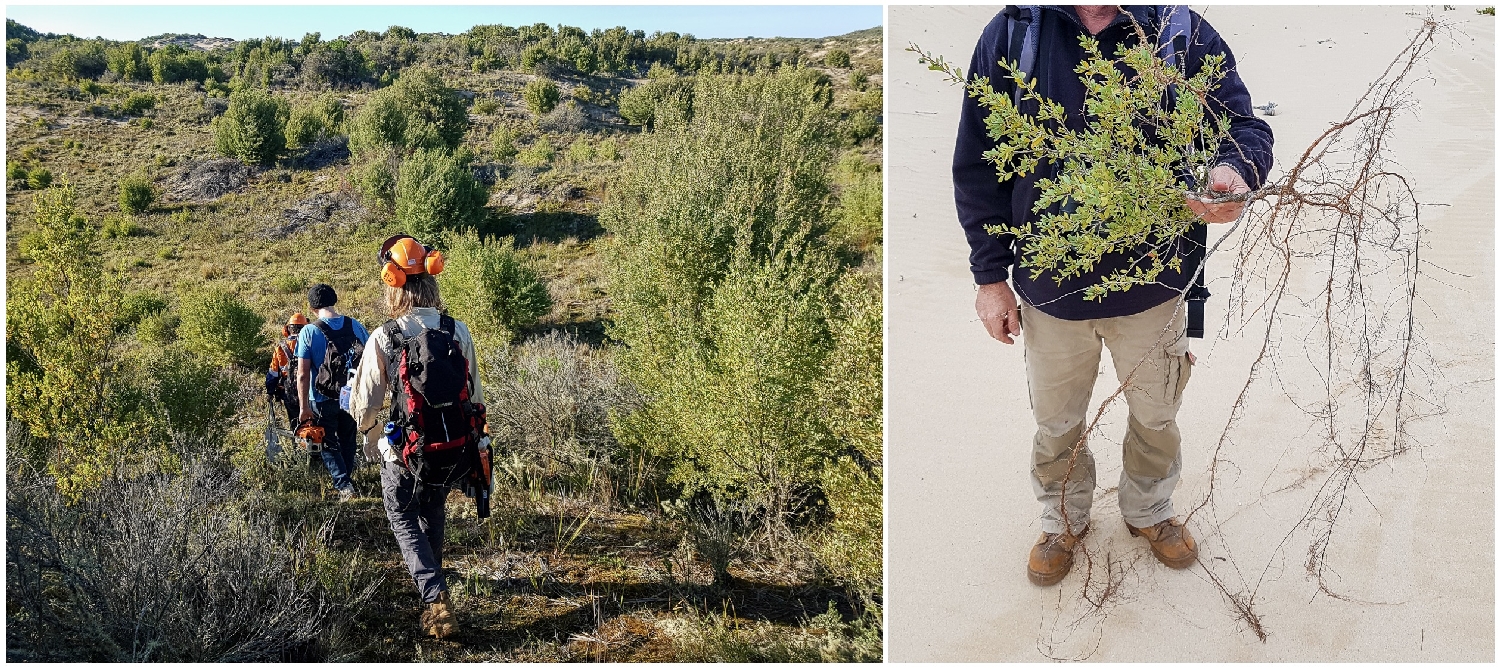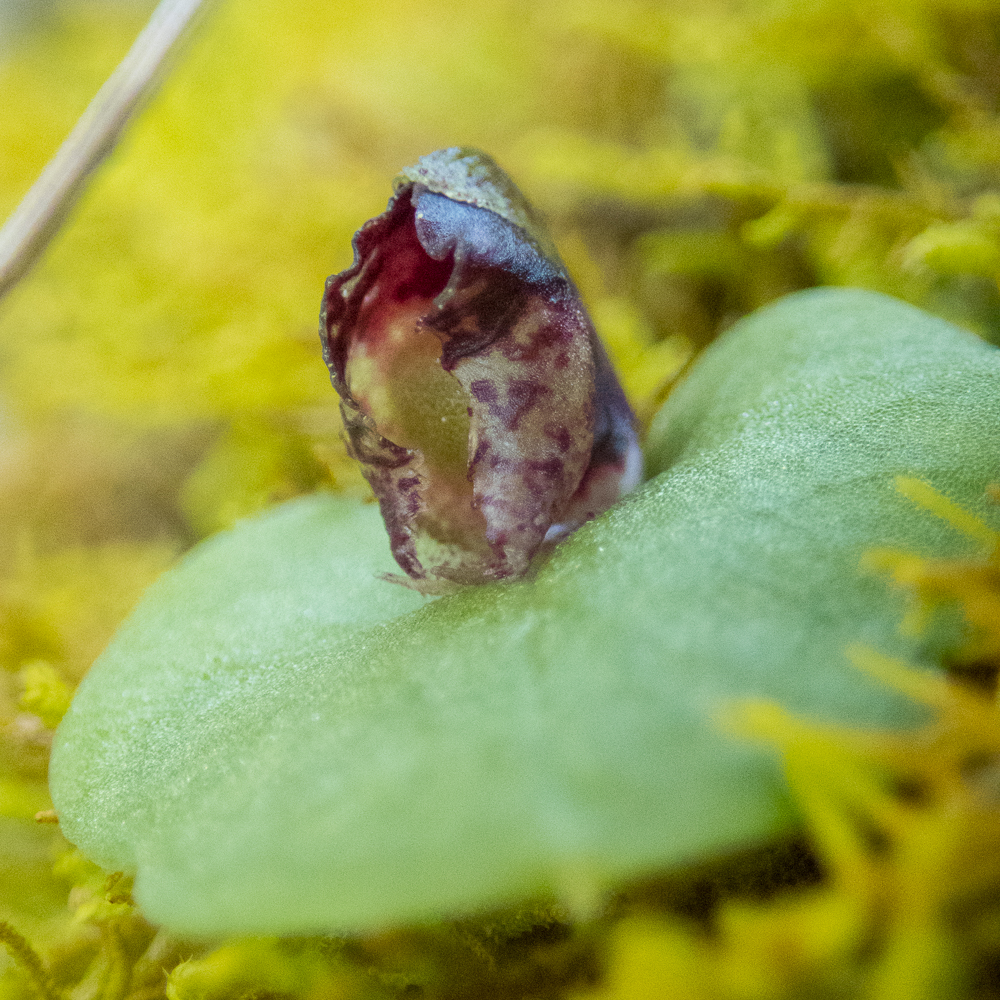NGT bushcare crew tackles a sandhill challenge
NGT staff have been busy with a range of bushcare projects this autumn and winter. In one of these, the Glenelg Hopkins CMA called us in to work with Parks Victoria on woody weed removal at a remote spot in the Discovery Bay dune system.
The site is an elevated limestone ridge, partially covered by shallow soils that support a low and diverse heath with a scattering of unusual plants. These include rare and endangered orchids such as the Sandhill Helmet Orchid (Corybas despectans), Coastal Leek-orchid (Prasophyllum litorale), Limestone Ridge Spider-orchid (Caladenia bicalliata) and the Scented Spider-orchid (Caladenia fragrantissima). Other flora is unusual for the region, including Blue Mat-rush (Lomandra collina) and Mallee Fringe-lily (Thysanotus aff. bauera).
An invasion of Coastal Tea-tree (Leptospermum laevigatum) (Australian native, but not local) and a rapid increase in the density of Coast Wattle (Acacia sp.) has been creating problems on the ridge, threatening to transform the natural vegetation structure and smother low-lying plants.
It was a task worthy of an AFL pre-season camp, with the crew carrying all the gear in and out through the sand dunes, including chainsaws, fuel, protective equipment, food and water. In a week of chainsawing, handsawing, lopping and old-fashioned hand-pulling the crew made a huge effort in fighting back woody weeds to protect the unique flora structure and diversity of the ridge. The work has bought valuable time, and hopefully a more permanent solution can be devised for the wider infestation.

The daily walk in through emerging Coastal Tea-tree (left) and the extensive root system of a hand-pulled Coastal Tea-tree
Credit is due for the energy and dedication of NGT’s regular bushcare crew members Sheryl, Dale and Tom. We’re definitely fitter than when we started the work!
And thanks to the GHCMA for getting us out there, funded through the Victorian Government Biodiversity On-ground Actions Program, and for the guidance of Dave Pitts, Glenelg Area Ranger at Parks Victoria.

